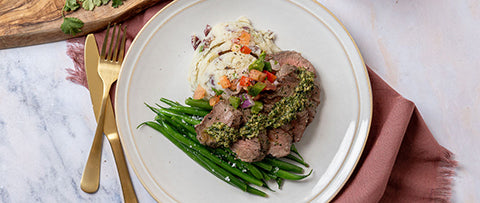What is High Blood Pressure?
Your blood pressure is the pressure of your blood within your arteries. This pressure is produced by the beating of your heart. When your heart beats it creates pressure that pushes blood through your arteries. If the force of your blood pushing against the walls of your arteries is consistently too high, this results in high blood pressure.
If you’ve ever gotten your blood pressure taken or have seen a blood pressure reading, you’ll notice that your reading consists of two numbers. The top, or first number, represents the systolic pressure. This refers to the pressure that is caused when blood pumps out of the heart and into your arteries. The bottom, or second number, represents the diastolic pressure. This is the pressure that is created when your heart rests between heart beats.
According to the American Heart Association, a normal blood pressure reading is a systolic reading of 120 or less and a diastolic reading of 80 or less, so 120/80. High blood pressure measurements range and are placed in 4 different categories based on the numbers; Elevated, Stage 1, Stage 2, and Hypertensive Crisis.
- Elevated - readings range from 120-129 systolic and less than 80 diastolic
- Stage 1 - readings consistently range from 130-139 systolic or 80-89 diastolic
- Stage 2 - readings consistently range at 140 and up systolic or 90 or higher diastolic
- Hypertensive Crisis - readings exceed 180 systolic and/or 120 diastolic
Why is High Blood Pressure Dangerous?
High blood pressure is often referred to as the “silent killer.” This is because oftentimes there are no immediate or obvious symptoms to indicate that it is present or damaging your body.
Over time, undetected or uncontrolled high blood pressure puts strain on your blood vessels and heart by making them both work harder and less efficiently. The force of high blood pressure also damages the tissues inside of your arteries making them narrower and harder to push blood through to your body. This increases the risk of serious complications such as heart attack, stroke, kidney failure, heart failure, and vision loss.
Are You At Risk?
There are many different factors that can put you at risk for high blood pressure:
- Age - The older you are the more likely you are to get high blood pressure
- Family history - If your parents or other relatives in your family have high blood pressure this can put you at risk for developing it as well.
- Kidney disease - High blood pressure can be a result of kidney disease
- An unhealthy diet - Consuming a diet high in sodium and processed food can contribute to high blood pressure
- Smoking - Tobacco can cause your blood pressure to temporarily increase and cause damage to your arteries.
- Too much stress - When you’re put in stressful situations your body produces hormones that temporarily increase your blood pressure
Manage High Blood Pressure With a Healthy Diet
A healthy diet is a proven method to help control high blood pressure. It can also help you lose weight and lower your chance of heart disease and stroke. When eating to fight high blood pressure, there are a few key objectives that you want to aim for:
- Limit sodium - Lowering your sodium intake can lower blood pressure and/or prevent it from developing in the first place. The American Heart Association recommends no more than 2,300 milligrams of sodium per day, 1,500 milligrams a day if you are already suffering from high blood pressure. Sodium can be found in more than just table salt so it is important to read nutrition facts and ingredient lists. Check out our low sodium meals for examples of meals that are low in sodium and still delicious.
- Reach for the fruits and vegetables - Fruits and vegetables are nutrient rich and loaded with antioxidant and anti-inflammatory compounds. They also contain potassium, which help to balance out the negative effects of sodium.
- Choose whole grains - Including whole grains such as brown rice, oatmeal, or quinoa in your diet can help fight high blood pressure, heart disease, and diabetes. They are rich in vitamins, minerals and antioxidants. Eating whole grains can also aid in weight loss, increase your potassium intake, and reduce damage to your blood vessels.
- Eat lean protein - Protein is essential for our bodies as it is the building blocks of our muscles and tissues, however, protein from animal sources tends to be high in saturated fat- which is a huge risk factor for your heart. Lean proteins such as chicken, turkey, and fish are great protein sources that will help keep the body healthy and ensure you are within healthy limits for fat and calories.
- Choose heart healthy fats - Fat is an important part of a healthy diet. It helps your body absorb essential vitamins and also helps your immune system. Saturated fats, or “bad” fats such as butter and fatty meats can increase the risk of heart disease if not avoided or limited. “Good” fats such as olive oil and canola oil can help lower cholesterol levels and your risk of heart disease and stroke.
Over time, undetected or uncontrolled high blood pressure increases the risk of serious complications such as heart attack, stroke, kidney failure, heart failure, and vision loss. High blood pressure is more common in older adults, but can affect people at any age and is best to manage early on, especially if high blood pressure is common in your family, you have kidney disease, you smoke, or you experience high levels of stress.
A huge factor that is completely within your control is your diet--choose foods that are naturally low in sodium like fruits and vegetables, whole grains, lean proteins, and heart healthy fats.
When you’re in a time crunch but still want to eat healthy, choose fresh prepared meals that are naturally low in sodium. For more in depth, personalized help to manage high blood pressure, talk to a licensed and registered dietitian.






